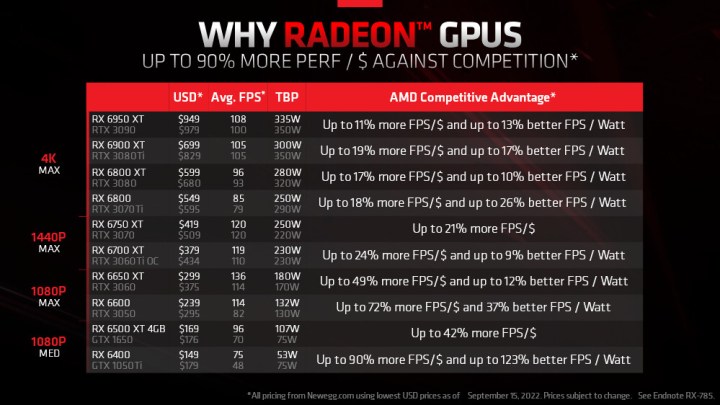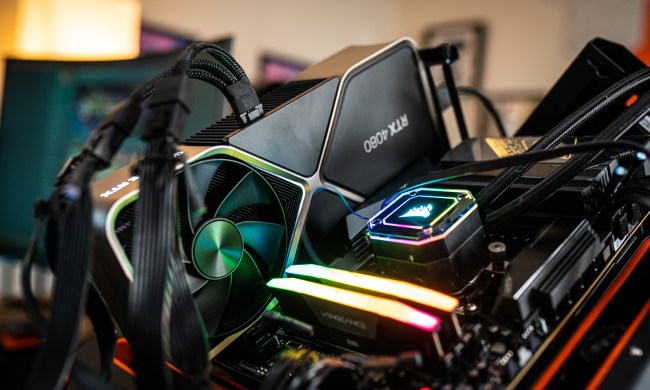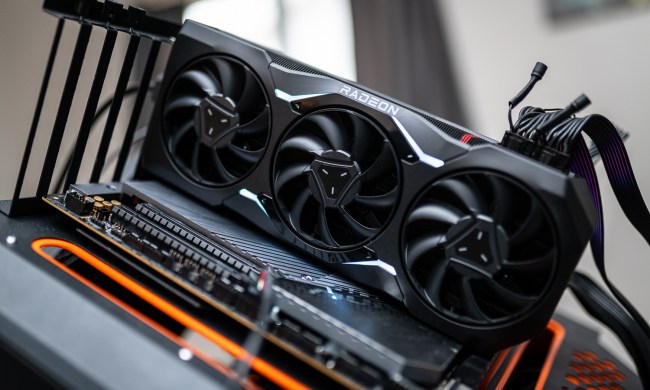AMD is doubling down, following a wave of high GPU prices from Nvidia. The company shared a chart showing the average selling prices of its RX 6000 graphics cards, which shoot below even list price.
AMD hasn’t officially cut prices, but with how the trend is going, it doesn’t need to.

Soon enough, AMD will usher in the next generation of graphics cards by introducing the Radeon RX 7000-series — but before that happens, RX 6000 GPUs are already getting cheap.
The flagship Radeon RX 6950 XT dropped down to $949 from its initial $1,099 MSRP, but it’s still a much worse deal than the RX 6900 XT, now priced at just $699 and only 5% worse than its successor. The RX 6800 XT is now $599, followed by the RX 6800 at $549 and the RX 6750 XT at $419. The mid-to-entry-level cards also had their prices lowered, and now, the cheapest AMD GPU only costs $149.
| New MSRP | Old MSRP |
| RX 6950 XT | $949 | $1,099 |
| RX 6900 XT | $699 | $999 |
| RX 6800 XT | $599 | $649 |
| RX 6800 | $549 | $579 |
| RX 6750 XT | $419 | $549 |
| RX 6700 XT | $379 | $479 |
| RX 6650 XT | $299 | $399 |
| RX 6600 | $239 | $379 |
| RX 6500 XT 4GB | $169 | $199 |
| RX 6400 | $149 | $159 |
The price cuts go a long way toward making the GPUs worth the money. This makes some of the best graphics cards more affordable than ever. The new prices can already be seen on some of the models seen on , and other retailers are probably going to follow soon.
Nvidia also sliced the MSRPs of its RTX 30-series GPUs a while back, so the two competitors are now, once again, matched. However, Nvidia has faced quite a lot of controversy in the past week or so, which makes these price cuts perfectly timed for AMD.
Although the hype around Nvidia is pretty high right now, just two days after the official announcement of its next-gen GPUs, many are disappointed by how expensive RTX 40-series has turned out to be — and Nvidia doesn’t seem eager to budge on the pricing issue. Now, AMD swoops in at just the right time to try to unload some of its RX 6000 stock at a lower price before it introduces RDNA 3. This was first reported by TechPowerUp.
The next-gen AMD Radeon RX 7000 graphics cards are set to release on November 3 — roughly three weeks after Nvidia launches RTX 4090, but most likely before the two versions of the RTX 4080 will hit. If AMD can price its next generation of




